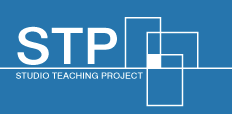
Essential Elements
There are several key qualities or characteristics that play an important role in a typically successful studio program:
- People - lecturers, tutors, technicians, members of the professional communities and student peers,
- Facilities and Resources - space, equipment, technologies and materials,
- Projects - areas of study, tasks and problems to be solved, especially those related to industry/profession and
- Time - the proportion of course time provided for studio and hours of access to facilities
PEOPLE
The people involved in studio include co-ordinators, studio advisors and the students themselves. Various studio models differ in their relationship structures however generally studio interactions include peer-to-peer learning, one-on-one instruction, group learning, critiques or reviews.
The number of students and consequent staff-student ratios are significant factors in studio models. Data suggests that small group teaching of between 15 to 25 students is the current practice which leads to best outcomes for student engagement and learning in Art and Design education. One consequence of the impact of increasingly large classes is an increase in numbers of part-time or session-based teaching staff, many of who may be professional practitioners.
PROJECTS AND TASKS
The program of projects or tasks is understood to be the primary vehicle for learning in the studio setting. These learning activities vary greatly between disciplines and also between studios within each discipline. An art studio may involve a series of practical classes, a field trip or a student’s own project supervised by an advisor. An architectural studio can be an architectural design project for a building, a field study, a series of tasks focused around an architectural theme. A design studio project may require students to analyse existing designs and propose an alternative solution, create a physical prototype for their own design. Each studio project is focused to achieve particular student learning outcomes.
The processes and outcomes of studio projects and activities tend to be exploratory and ‘open-ended’. While studios differ in content across the disciplines, all studios include a range of projects and activities which can be analysed for their capacity to address skills development, concrete knowledge and tacit knowledge:
- Skills development - occurs when students are working with and through categories or orders of disciplinary specific knowledge using disciplinary specific skills and conventions.
- Concrete knowledge - tends to be structured, such as knowledge of composition, material, form, structure space and its experience.
- Tacit knowledge - is indicated by the student’s judgement in relation to knowledge and skills. It is accumulated through applying skills and concrete knowledge during a process and allows an understanding of abstract notions of order and the conceptualization and synthesis of ideas.
FACILITIES AND RESOURCES
The place of learning and teaching includes the physical circumstances of the studio setting, the space of studio its furnishings, lighting together with technology infrastructure. Implicit in this are questions about the degree of access students have to studio space, the flexibility of studio space, and whether studios provide dedicated spaces or not.
The amount and type of space available for studio teaching, class size and staff to student ratio were identified several times as critical in the surveys, and it is often implied that such spaces were under threat and/or hard to maintain. Funding associated with the physical spaces, as well as maintaining resources such as software and computers were regarded as critical factors.
Undergraduate Studio Space
The data indicated that in Australian undergraduate programs, the the majority of the Art disciplines provided dedicated studio space for their students. In contrast, the majority of Architecture discplines did not provide dedicated studio space, or provided it only to some years of study. In Design disciplines very few or none provided dedicated studio space.
Postgraduate Studio Space
Most disciplines provided dedicated space for Postgraduate course work students. For Postgraduate research students, the Art disciplines provided dedicated space for their students, while very few Architecture and Design discplines provided dedicated space - although in some areas this was in the form of a 'shared' common room.
Access to Space
Approximately half of students have 24/7 access to their students space, with the percentage increasing for postgraduate students.
TIME
The time studio occupies in the curriculum varies greatly between disciplines and institutions. This variable is particularly unclear as consideration for formal allotted time in subject timetables and un-timetabled time need to be considered as an overall to gauge the effectiveness of the use of studio as the principal form and place of learning. Furthermore aspects of time also encompass the relationship of a studio to a particular course structure such as for example semester-long or compressed learning activities.
Overall, the data suggests there is a high degree of variation in the number of hours students spend on particular activities both within and between disciplines. However it would appear all models of studio strive to achieve best outcomes for learning through non-linear, time intensive and reiterative practices with expectations for engaging in studio use over time beyond the limitations of formal timetabled subject structure.



